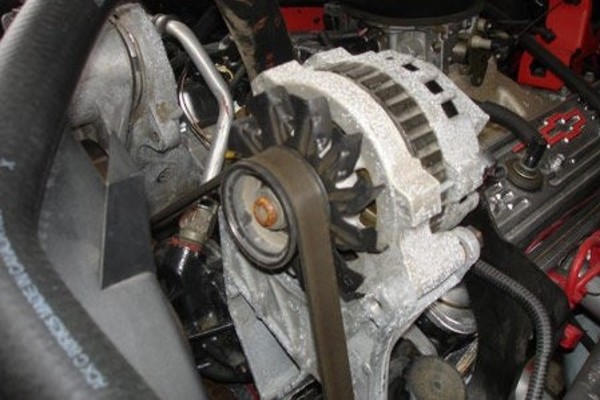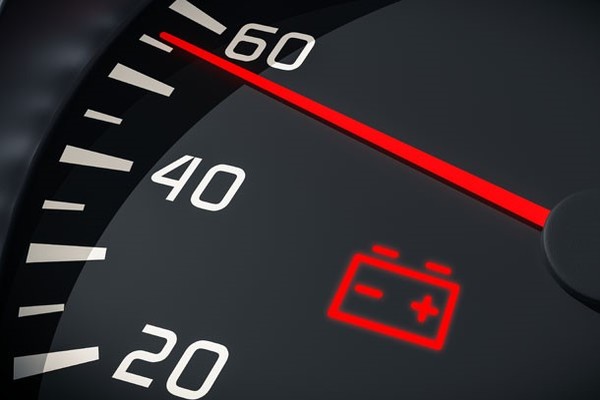There are only a few parts that actually require frequent inspections due to the importance of their role. These are usually the vital ones that actually play a role in the vehicle's performance and the occupant's safety. One of these important parts is the alternator.

Alternator problems can be in many forms
This part is mostly connected to the vehicle's performance. But if ignored for a long time, this could eventually concern the safety of the driver and his passengers.
>>> Related: How long do alternators last? When and how to have them replaced?
What does an alternator do?
An alternator's job is to charge the battery so it can power up your car's electronic devices. Any problems with the alternator may result in you having a hard time starting the car.
Asides from that, you can also hear unlikeable and unnatural noises that may bother you. These noises can also worsen if left unaddressed for too long.

An alternator's job is to charge the battery so it can power up your car's electronic devices
So, how do you know that your alternator has problems before it starts showing the signs? The answer is that you need to test it! But how exactly is this supposed test done? Do you need special equipment for this? Does this need to be performed by an expert?
The answer to that, as well as other things you need to know about testing your alternator, are right here in this article from Philkotse.com.
Problems with your alternator
Alternator problems can be in many forms. This will largely depend on the particular failure, which overall affects the alternator's performance. But regardless if it's a false assumption or there really is a problem, it's still a good idea to make through checks.
The good news is that there are a few tests that you can do straight at home. This is mostly concerned with checking the battery, the drive belt and the alternator itself. Checking these parts will usually help you narrow down the problem until you find it.
These tests only require a few minutes, and you won't even need to flip out the alternator from your car. You will find it necessary to have a digital multimeter for this task. To test the car battery, you will also need a hydrometer tool.
Before we step into the checking instructions, here are the common reasons why your alternator isn't working the way it's supposed to.
- Loose or corroded battery terminals
- Defective battery
- Loose or worn out drive belt
- Loose mounting bolts on the alternator
- Bearings on the alternator are worn out
- Other internal components of the alternator are worn out
- The low electrolyte level in car battery
- Bad starter and charging system wires and connectors
>>> You might concern: This is how you can check if your car's alternator is failing
Troubleshooting alternator problems
An ALT or red-battery warning light on the dashboard means that you have alternator problems. On the other hand, there are also other, more obvious signs that there is something wrong with your alternator.

An ALT or red-battery warning light on the dashboard means that you have alternator problems
A few signs include headlights that lose brightness all of a sudden and dim dashboard lights. If your car battery often loses power, it may also signal that there are problems with the charging system.
But to be sure, you still need to confirm if your alternator has indeed given up by using the steps below:
The alternator output test
The most common reason why alternators give up is due to normal wearing. The brushes are one of the first parts that give in to the challenges of time.
But aside from that, a blown fuse in the charging circuit failed diode in your alternator's rectifier assembly or a defective fusible link.
By making use of a digital multimeter, you can check how much voltage is being delivered by your charging system.
1. Measure battery base voltage
If your car battery is completely discharged, you will need to borrow someone else's battery for this test. This will let you check and verify if it's your charging system that has a problem. So to start, set your voltmeter to approximately 20 on your DC voltage scale.
Then, connect your probes to the battery posts while following the right polarity. If the battery is fully charged, the reading will show somewhere around 12.6 volts. Take note of whatever the results show on your end. This will be necessary for the succeeding tests.

If the battery is fully charged, the reading will show somewhere around 12.6 volts
>>> Relevant articles:
- 5 simple steps to get your car alternator checked in a proper way
- Will a dead and dying battery destroy your cars’ alternator?
2. Measure the charging system
Start your car engine, then let it idle. Ask for someone to help you maintain the engine speed somewhere close to 1500 rotations per minute.
Remember to have all the vehicle accessories turned off while doing this. Now, connect your voltmeter to the battery terminals. Then, take note of the voltage reading.
You should have a result stuck between 0.5 to 2 volts over your vehicle's base voltage. If you get results higher than that, it's an indication of overcharging condition. This problem may be somewhere in an electrical circuit or the alternator.

Start your car engine, then let it idle
If your reading is the same or is lower than the base voltage, your charging system may not be working. The problem may be a poor connection in your vehicle's charging system.
This can also be a voltage regulator or a failing alternator. A voltage regulator is usually mounted on the case of the alternator in most modern vehicles.
>>> Also check: Essential tools needed in a car tool kit for DIY car maintenance
3. Measure the charging system's load voltage
If your charging system passed our previous test, check the charging system to see if it produces adequate power for the car battery. Also, check if it produces enough for the other electrical systems.
To do this, ask a helping hand to start your car engine for you. Then, increase and keep the engine speed at about 2000 rotations per minute. Then, turn all the accessories in your vehicle. This may include the headlights, wipers, air conditioning systems, and so on.

Check if it produces enough for the other electrical systems
>>> Related: How to test an alternator without a multimeter
Once again, make a note of the voltmeter reading. After that, deduct your base voltage from the load voltage reading. The end result is the charging voltage.
The charging voltage needs to be higher than the base voltage by 0.5. If not, you must be dealing with poor circuit connections.
Recent posts
- Car maintenance: Things you should know when the fuse keep blowing Nov 30, 2022
- Car maintenance tips: How to inspect and replace serpentine belts Feb 19, 2021
- Problems solved: 8 simple tips to save money on car maintenance Sep 12, 2019
- Car maintenance checklist after a long road trip Mar 20, 2019
- 4 essential tips to control your car maintenance expenses Nov 17, 2022












